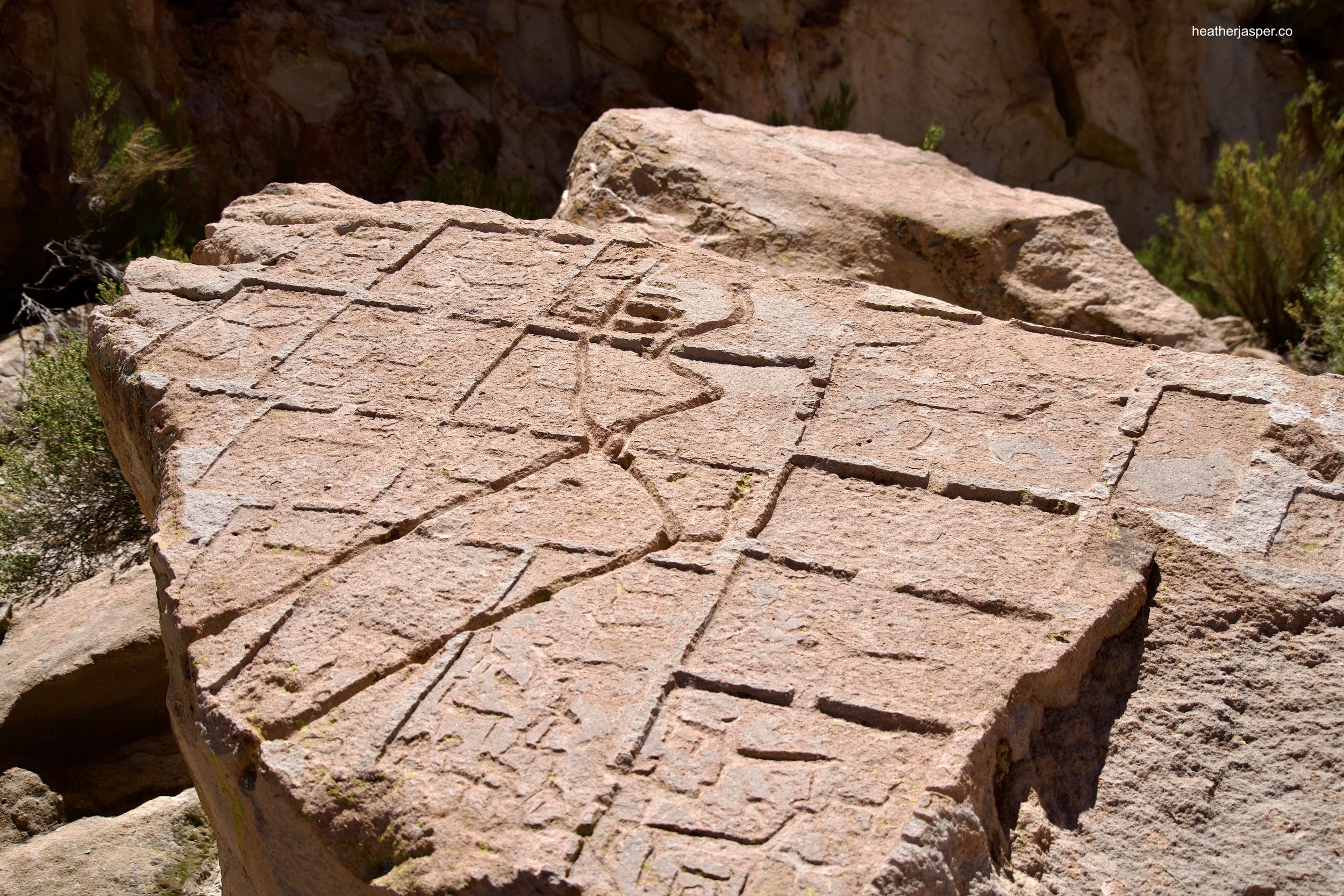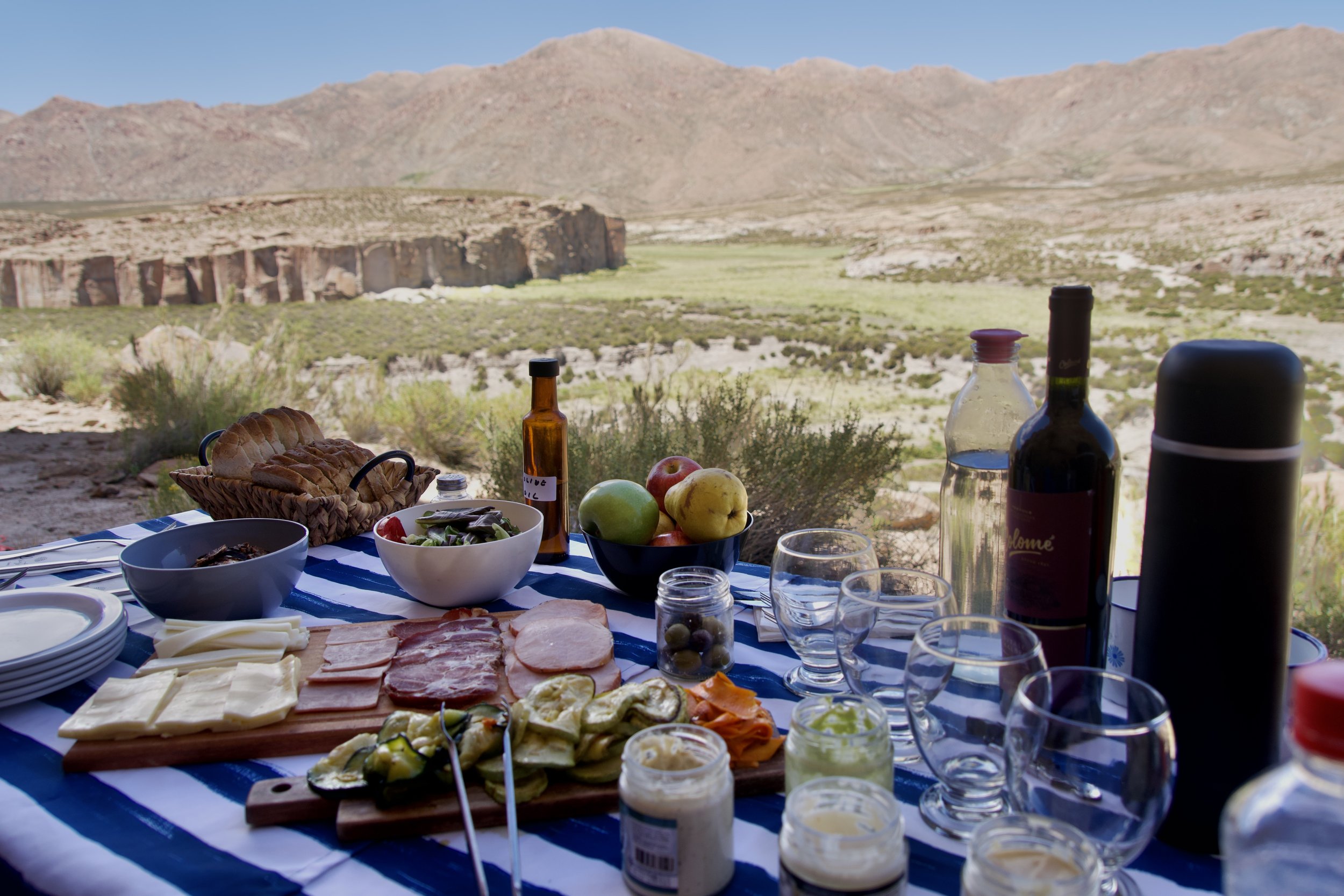Barrancas Llama Caravans
The people of Barrancas still decorate their llamas with red yarn collars as their ancestors have for hundreds of years.
Llama caravans brought llama wool and other products to trade from Bolivia to Argentina for thousands of years.
The llama caravan tradition didn’t end until 2018, making Barrancas one of the best places in Argentina to learn about Andean culture.
The first excursion I did from Pristine Camps was to Barrancas, a canyon with dramatic orange cliffs and an even more dramatic history. Hundreds of pictographs and petroglyphs line the canyon, mostly depicting what are obviously llama caravans.
Visiting the canyon was fascinating and my guide, América had tons of great information about the place. I got even more information from the book “Caravanas de las Alturas” by Dr. Bibiana Vilá. If you’re interested in the history of llama caravans, look for some of her research.
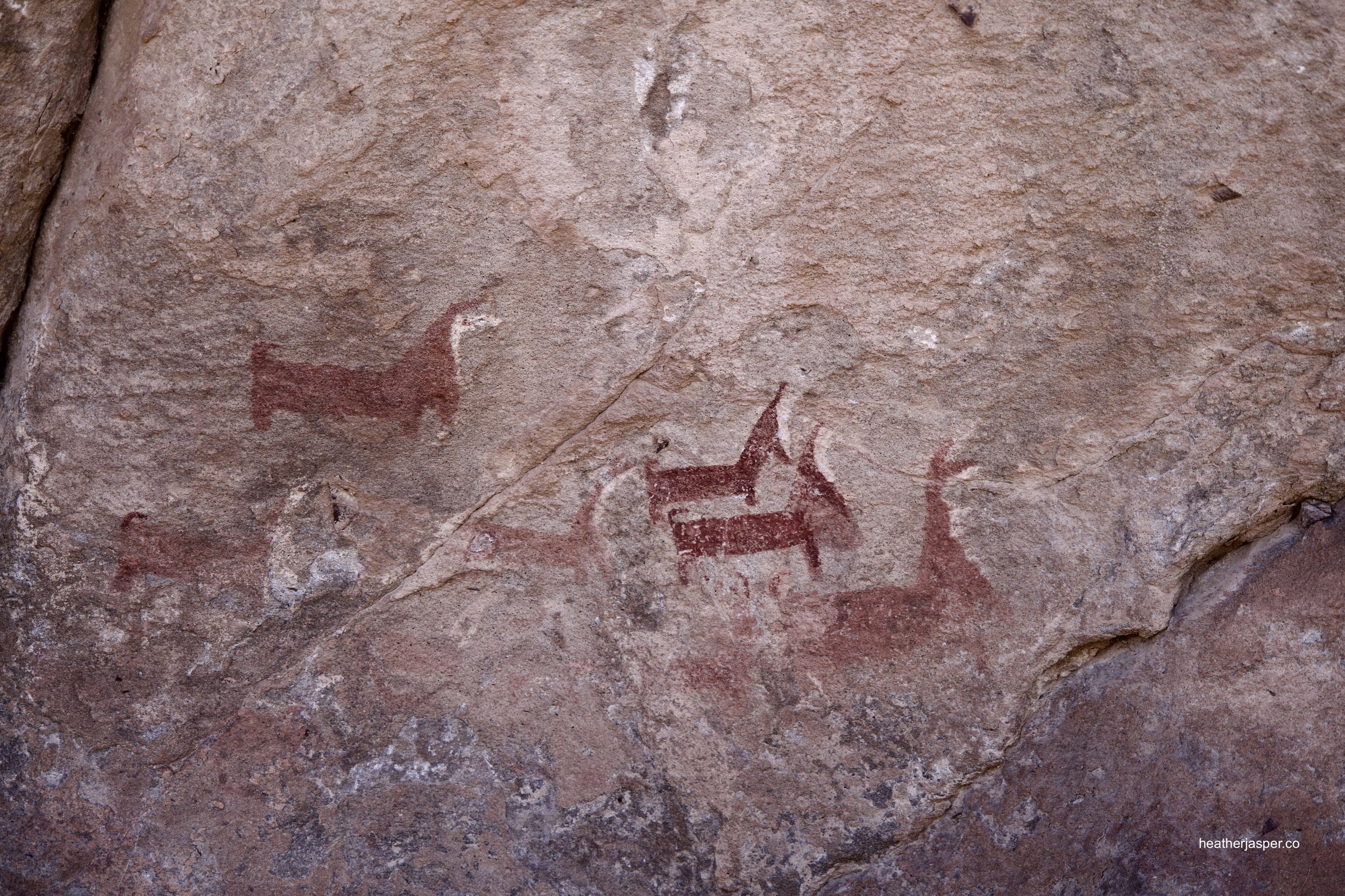
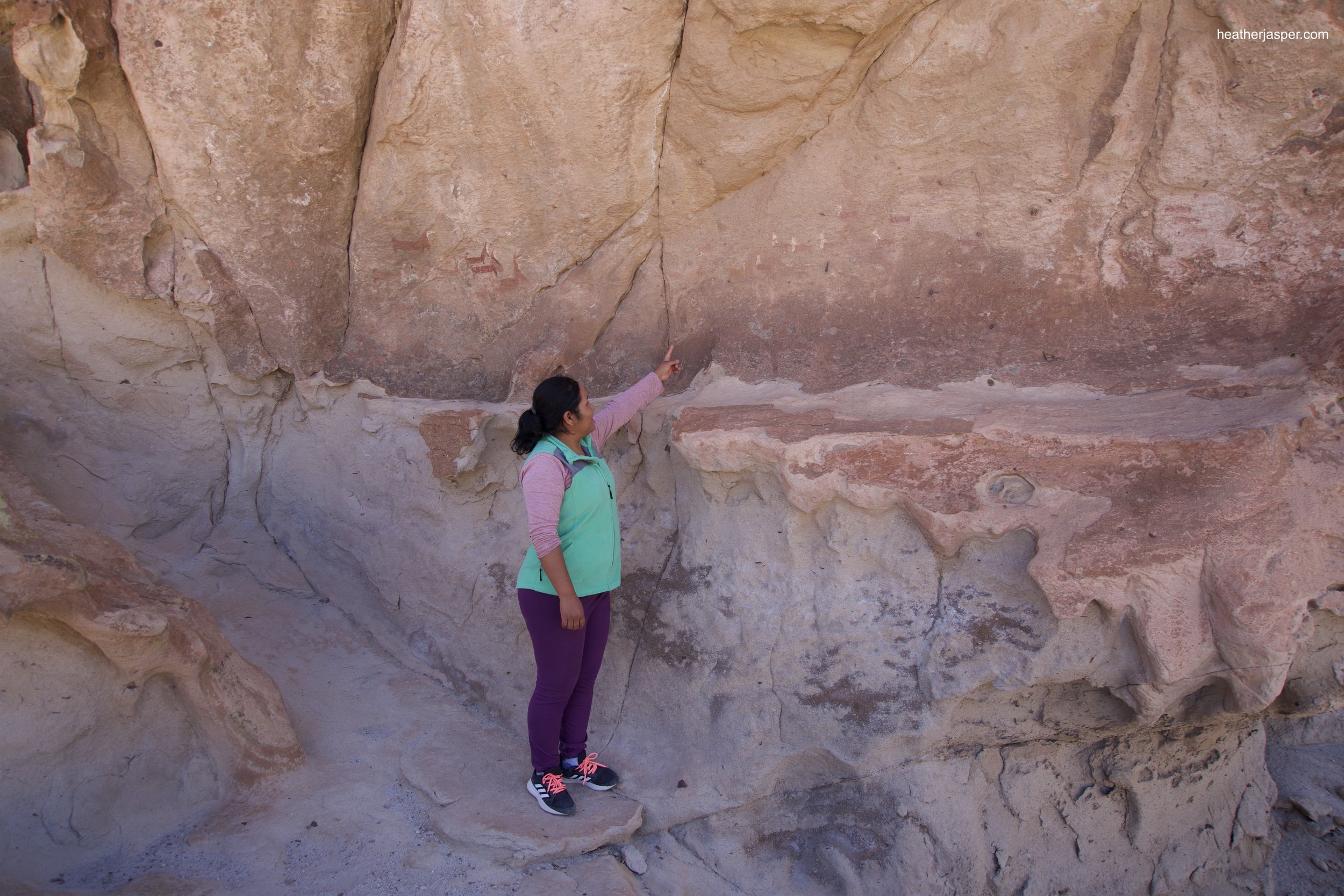

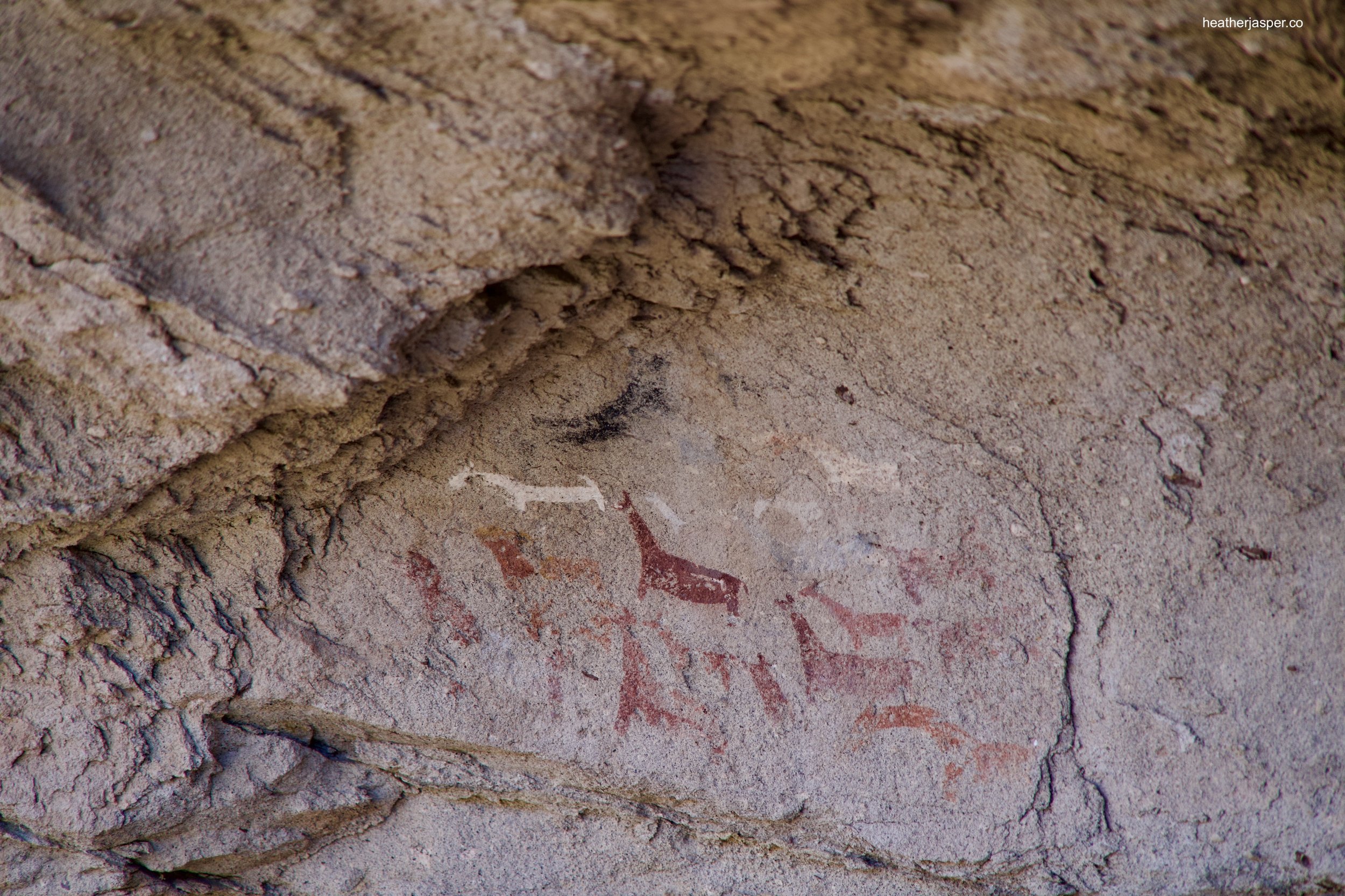
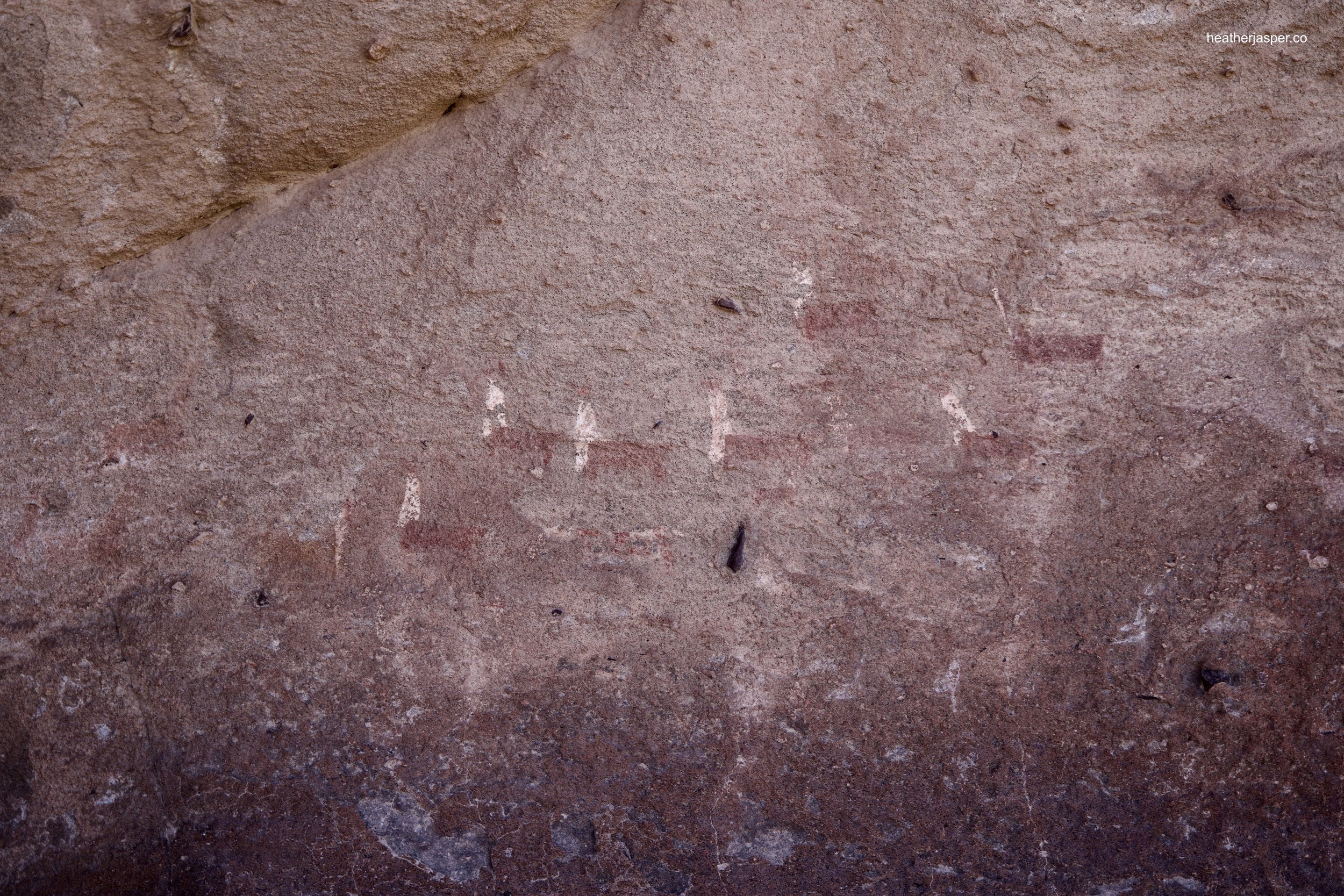
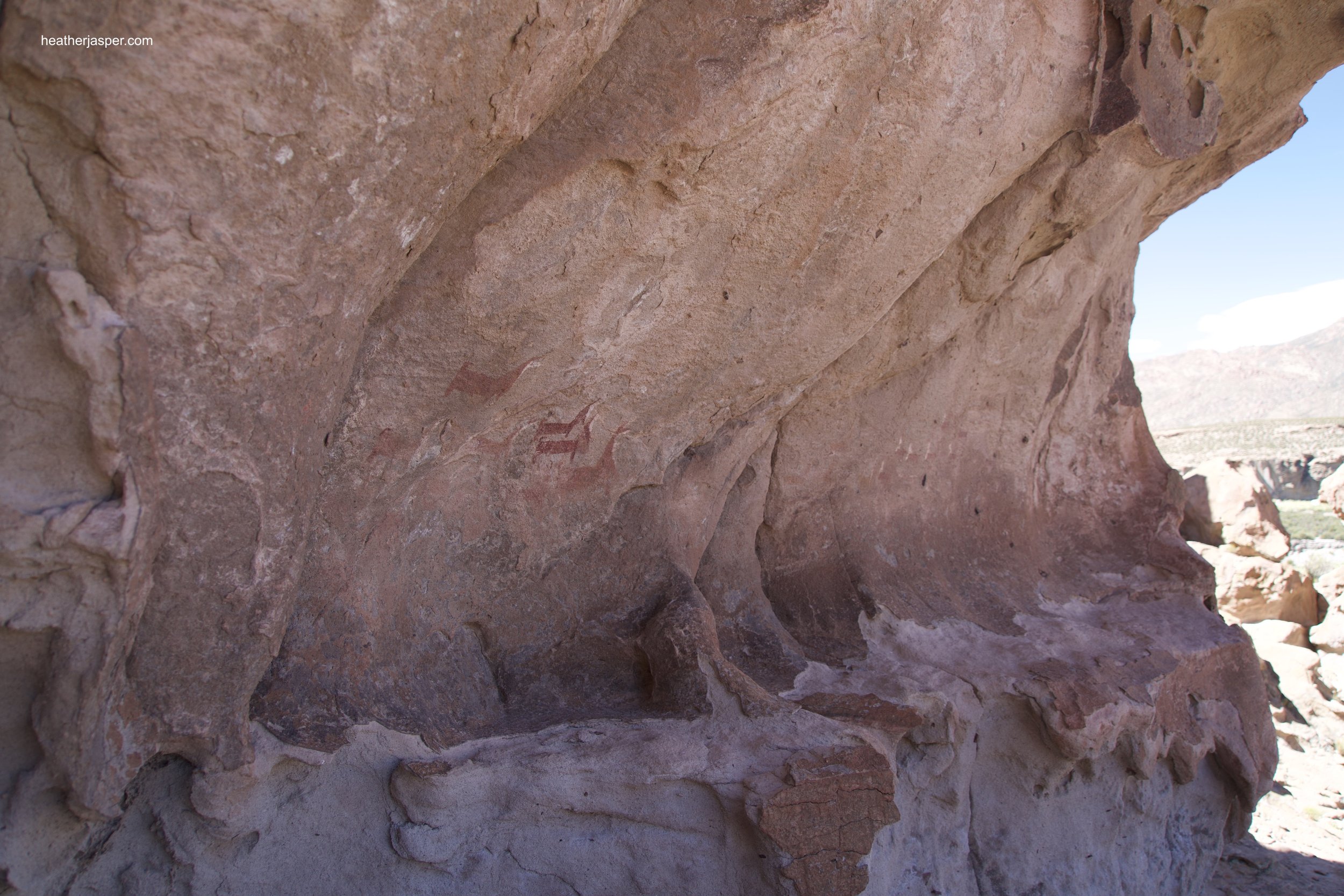
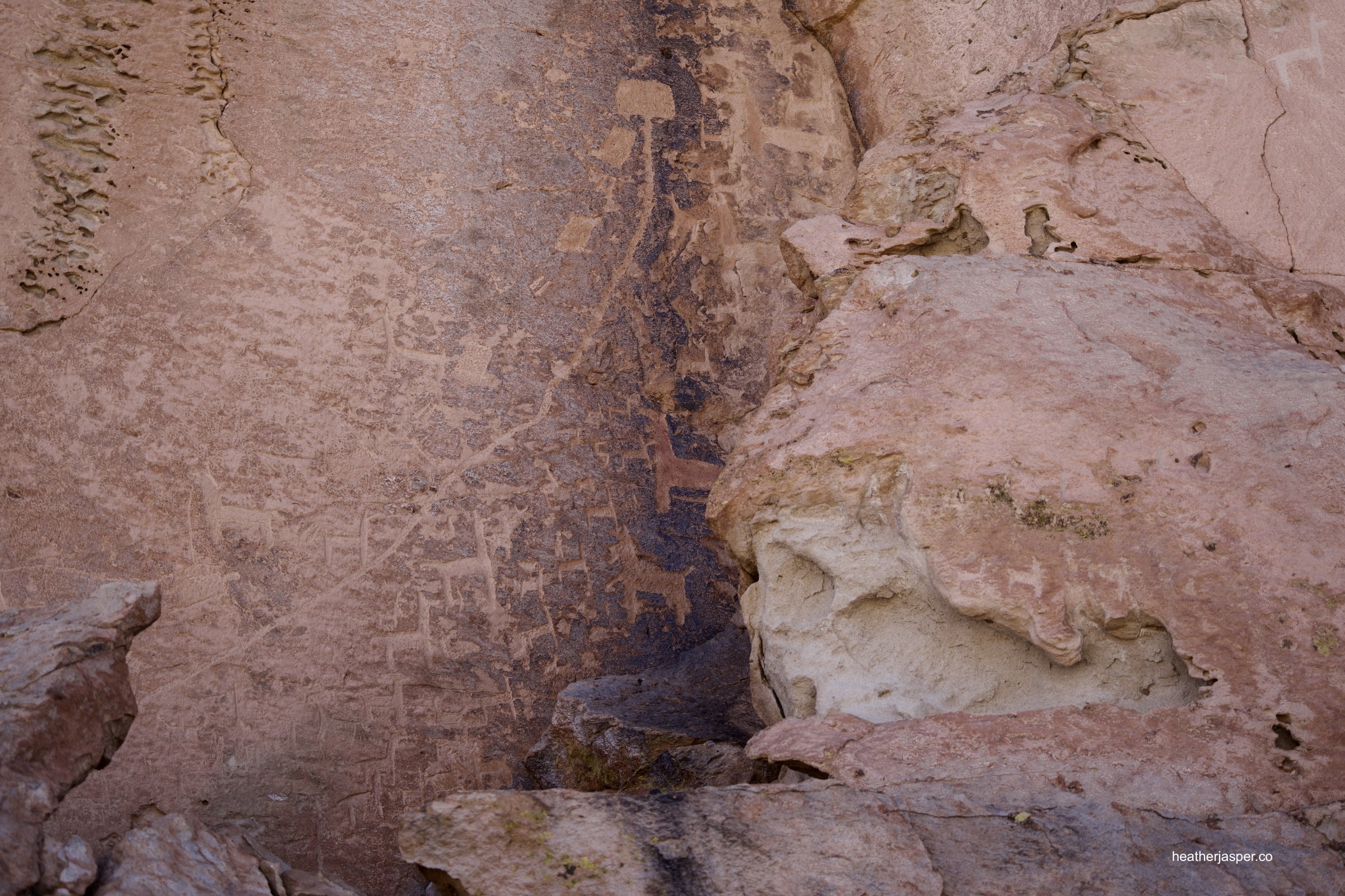
Local guides required
The only way to visit Barrancas is with a local guide because the locations of pictographs and petroglyphs are not marked. América was a fantastic guide and knew the location of even the most hidden petroglyphs and pictographs.
If you don’t already have a local guide, stop at the museum in the village of Abdón Castro Tolay.
It’s a small museum, but there are several great exhibits. I was most impressed by the exhibit on stone maps and that the Cusco region has four of South America’s eight stone maps. This is where I bought my book about llama caravans written by Argentine ethnobiologist Dr. Bibiana Vilá.
The stone map
This is the map that’s featured in the museum. It’s easily more than six feet (two meters) across. The two squiggle lines are rivers and the squares are fenced llama pens. Most of the pens contain only llama petroglyphs but some also contain human and bird figures.
Stone maps
The square at the top of the trail, and the squares on the left side, represent ponds where caravans can rest and water their llamas. I don’t know why the museum doesn’t classify this map as one of South America’s stone maps.
Pristine Camps Salinas Grandes picnic lunch
Without any exaggeration, this is one of the best picnic spreads I’ve ever seen. Everything was delicious and fresh. The pesto and smoked eggplant spreads were made by the Pristine Camps chef, as was the freshly baked bread.
How to get there?
The best way to visit Barrancas is as an excursion from Pristine Camps. If you want to visit on your own, drive west from Purmamarca, up over the mountains and across the salt flats. On the far side of the salt flats is a road that goes north to Abdón Castro Tolay. Don’t forget to stop at the museum to get a local guide because the locations of the petroglyphs and pictographs are not marked.






